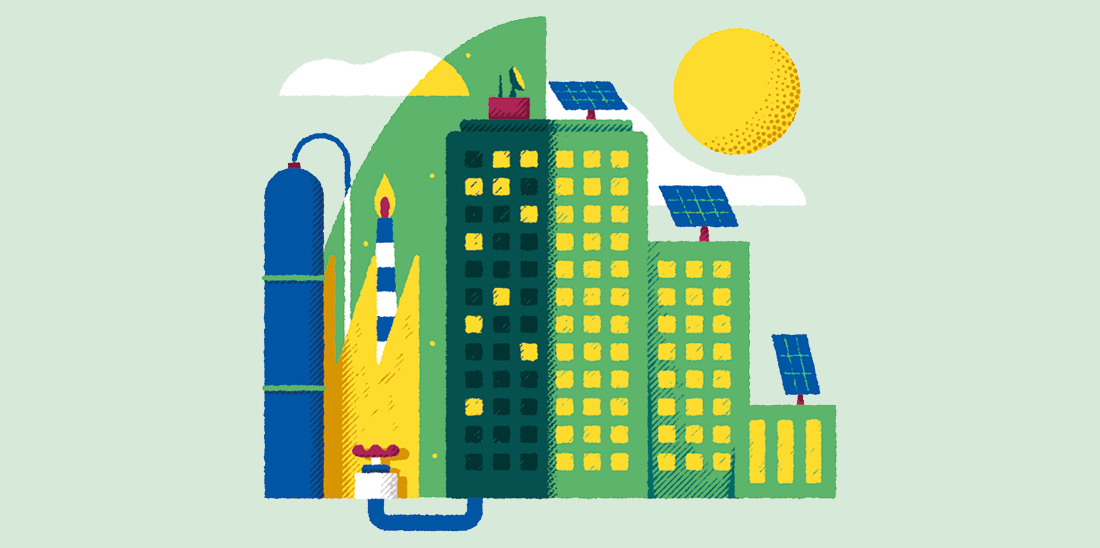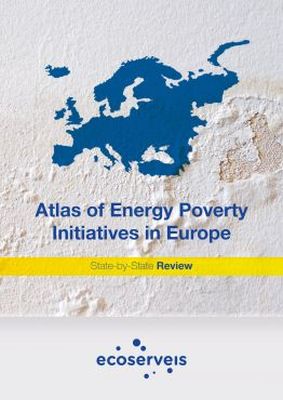Energy crisis and vulnerability
A new energy model for the city
- Dossier
- Jan 23
- 6 mins

Low-income households are those most affected by the rising prices of basic utilities and are also those with the fewest tools to help them cope with the situation. The measures that have been adopted to contain prices and protect users are temporary and short-sighted. The long-term strategy calls for reducing external dependence on fossil fuels and opting for more local energy generation from non-polluting energy sources. To succeed, this energy transition must leave no one behind.
“This month I can’t afford to pay my electricity bill”. This is one of the most frequently heard statements at the Energy Advice Points in the city of Barcelona, a universal service for identifying cases of energy poverty that provides almost 3,000 monthly consultations and which, since its creation in 2017, has helped almost 200,000 people, many of whom are in vulnerable situations.
The situation for households is critical because the cost of energy services such as electricity and natural gas has skyrocketed in recent times. By way of example, electricity cost around €60/MWh in February 2012 and, ten years later, it has exceeded €300/MWh.1 Measures such as VAT reductions on energy bills or bigger reductions for beneficiaries of subsidised electricity have mitigated the impact on consumers’ wallets, but they are temporary measures that do not solve the underlying problem.
The current energy crisis, of huge geopolitical magnitude, is having a real impact on people’s lives and is affecting vulnerable groups in particular; it means that energy costs are taking a bigger chunk of household budgets. In the home, energy is used to light, heat and cool rooms and food, and to operate different appliances. When energy bills rise so steeply, vulnerable households have to choose between compromising their thermal comfort at home, compromising other basic needs, or going into debt.
When electricity or gas prices rise, many families decide to cut back on other items essential to their well-being. It is the all too familiar heat or eat dilemma.
When electricity or gas prices rise, many families decide to cut back on other items essential to their well-being, such as food spending, for example. In fact, the heat or eat dilemma is all too familiar, referring to the need to choose between heating or eating. Another option involves reducing energy use when energy prices rise. It is not uncommon to find people reducing heating hours in winter or air conditioning in summer in an endeavour to lower their bills. But in this context of “cutting back to save” there is a paradox that needs to be pointed out. For example, a refrigerator is an appliance found in every household and is always on. While older refrigerators consume 1,000 kWh/year, the newest and most efficient refrigerators on the market consume less than 300 kWh/year. The question is: who has access to a modern, energy-efficient refrigerator? Certainly not the poor. This is linked to the concept of the poverty premium, when low-income and poor households pay more than wealthier ones for essential goods and services, which exacerbates their energy poverty.
Energy poverty is broadly understood as a situation in which households are unable to access essential energy services. These situations depend on exposure factors, but also on personal factors and coping capacity. In terms of energy needs, living near the sea is not the same as living in an inland municipality, nor is living in a well-insulated and well-oriented dwelling the same as living in housing in other conditions. State of health or age are also factors that exacerbate cases of energy vulnerability. And resilience, the response capacity in each case, determines how easily the situation of energy vulnerability is overcome or not: a person with a chronic illness who can afford to move house to improve their thermal comfort will not face a situation of energy precariousness.
Although energy prices are uniform throughout the country, specific urban factors determine the degree of energy poverty.
The situation, in figures
Thanks to the official energy poverty indicators defined by the Ministry for Ecological Transition and the Demographic Challenge (MITECO) and the latest figures from the Statistical Institute of Catalonia (Idescat), we know that 15.9% of the Catalan population cannot keep their homes at an adequate temperature and 10.8% of the population is slow to pay their household utility bills, compared to 6.6% in 2017. Equally noteworthy is the figure indicating that 23.1% of the Catalan population live in homes with leaks, damp or with floors, windows or doors in poor condition.
These general figures reveal differences depending on whether we analyse inland or coastal areas, with a more agreeable climate, but there are also differences between urban and rural environments. Although energy prices are uniform throughout the country, specific urban factors determine the degree and characteristics of energy poverty. One example is the price of housing, which is much higher in urban contexts and affects household budgets. The architectural make-up of cities, characterised by multi-dwelling buildings, also affects the demand for energy needed for heating and cooling.
Differences in the incidence of energy poverty are also found within urban centres. For example, the map resulting from the study conducted by researchers from the Barcelona Public Health Agency comparing six indicators of energy poverty in the 73 neighbourhoods of Barcelona2 is very visual and shows significant differences between neighbourhoods.
Towards achieving a just energy transition
As citizens, we have linked the current energy crisis to the rise in electricity and gas prices because it affects us directly. But the root cause behind the current high prices in European markets is the European Union’s energy dependence on fossil fuels, such as gas. The measures that have been adopted to contain prices and protect users are temporary and short-sighted. The long-term strategy calls for reducing external dependence on fossil fuels and committing to an energy transition that allows for more local energy generation from non-polluting sources. However, to succeed, this energy transition must leave no one behind.
 Illustration. ©David Sierra
Illustration. ©David SierraOften, only those with the financial means or access to information have the potential to reduce dependence on fossil fuels.
Most readers probably know someone who has or is in the process of installing solar photovoltaic panels on their roof. But the truth is that, often, only those with the financial means or access to information have the potential to reduce dependence on fossil fuels and lower their utility bills. In addition, in the urban context, there is the added complexity of neighbours having to agree on the use of the roofs of buildings to generate energy. Without a doubt, it is more difficult for vulnerable groups to obtain not only financing but also information, and sometimes they cannot even benefit from measures to promote renewable energies. This applies to subsidies: people who, owing to their low income status, are not obliged to pay personal income tax (IRPF) are penalised, as are families benefiting from some kind of tax rebate, such as on property tax, who are no longer eligible for specific rebates for the installation of renewable energies in the home.
The energy crisis will be endemic until we achieve a clean energy supply as independent as possible from third parties, especially from geopolitically unstable countries. Reducing energy demand, improving efficiency and access to renewable energies will meet the energy challenge with the two-fold benefit of environmental sustainability and energy independence. Provided, of course, that no one is left behind.
1 Evolution of the electricity market. CNMC [Spain’s National Authority for Markets and Competition]. http://ow.ly/i82H50LENaO. Open in a new window
2 “Research paper. Geographical inequalities in energy poverty in a Mediterranean city: Using small-area Bayesian spatial models”. Marí-Dell’Olmo, L., Oliveras, C. Vergara-Hernández et al. Science Direct http://ow.ly/eBN050Lue0t
Recommended publications
 Atlas of Energy Poverty Initiatives in EuropeVarious authors. Ecoserveis, 2017
Atlas of Energy Poverty Initiatives in EuropeVarious authors. Ecoserveis, 2017
The newsletter
Subscribe to our newsletter to keep up to date with Barcelona Metròpolis' new developments




